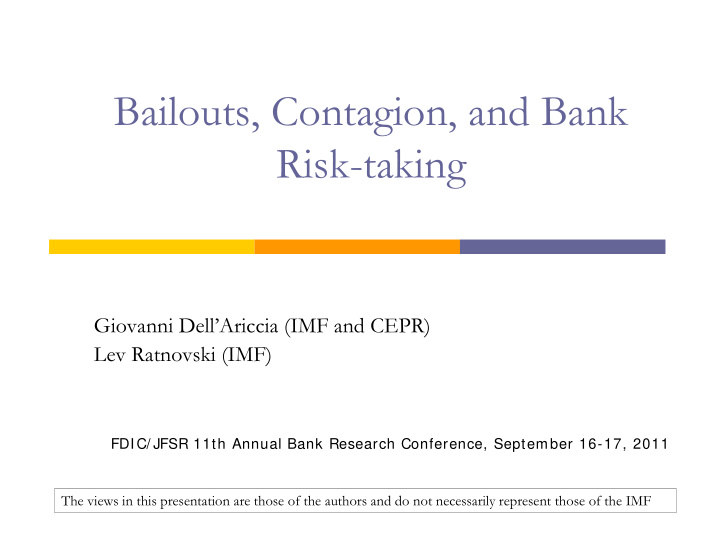



Bailouts, Contagion, and Bank Risk-taking Giovanni Dell’Ariccia (IMF and CEPR) Lev Ratnovski (IMF) FDIC/ JFSR 11th Annual Bank Research Conference, September 16-17, 2011 The views in this presentation are those of the authors and do not necessarily represent those of the IMF
Paper in one slide Would care about cholesterol intake on a plane that is about to crush? What if I gave you a parachute? If large systemic banks go under, the resulting downturn may take under even the most careful lender Insurance against this type of risk may increase incentives to lend cautiously
Traditional bank level distortions Banks tend to take “too much” risk Micro distortions (well studied): Investors cannot price risk at the margin Limited liability and asymmetric information Deposit insurance TBTF Internal governance issues
Policy can help, but time inconsistency
Systemic distortions: Externalities A bank’s failure affects other banks stability Direct exposure Fire sales Panic runs Macro linkages Some risks can be diversified away others not Model this as a classical externality problem Two banks Endogenous (independent) risk taking If one fails, so does the other
Model
Model
An additional source of excessive risk taking Banks do not internalize effect of their failure on other banks’ returns Risk of contagion reduces expected return on monitoring effort Would you watch your diet on a plane that is likely to crash? In equilibrium, both banks reduce effort and increase systemic risk
Traditional regulatory response cannot eliminate problem. Bailouts may help.
Still working on
Recommend
More recommend